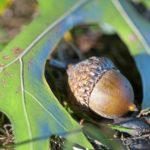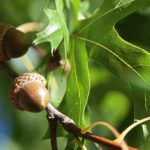That light “thud” you keep hearing outside is no doubt a falling acorn from an oak tree, likely a red oak, which will continue to unleash acorns in large numbers for the next two weeks, according to regional experts.
The bountiful amount of acorns is indicative of a “very good year,” at least in the southern portion of the state, said Ryan Reed, natural resource program specialist in the Bureau of Forestry, Pennsylvania Department of Conservation and Natural Resources.
Brian Wolyniak, a Penn State extension educator of urban and community forestry in Allegheny County, said it looks like a prolific year for the red oaks, which are among the most prominent oak species in southwestern Pennsylvania.
“This means we will have more acorns underfoot and the wildlife will feast,” Wolyniak said.
However, the state as a whole might not have had as big of a year according to initial reports, said Travis Lau, spokesman for the Pennsylvania Game Commission, which surveys acorn production.
The amount of acorns that fall annually, with it cyclical booms and busts, impacts the quality of life and life itself for animals and birds that feed on these nuts.
“With more acorns, wildlife will be much better equipped to handle winter or fall migration,” Reed said.
Bears, deer and other mammals such as squirrels, chipmunks, mice and some birds will gorge on the acorns, he said.
“That increases their chances for survival and spreads out the feeding pressure,” he added. The ample number of acorns ensures the reproduction of more oak trees, Reed said.
How did the bounty of acorns come to be? The weather and other factors last year into this year made for a robust acorn mast, Reed said. There were no late freezes impacting the trees and conditions were right for pollination. “You want some breeze but not too windy and not too wet, Reed said.
Factors accounting for the large number of acorns could go back two three years, said Wolyniak. “Weather conditions must have been favorable,” he said.
Regardless of the reason why, acorns will continue dropping for the next two weeks, Wolyniak said, always falling before the leaves, he noted.











